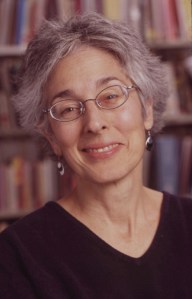via Ms Magazine Blog, where columnist Anita Little included We Are Water by Wally Lamb in a list of 25 feminist reads for the holidays. Here is Little’s explanation:
“Male feminist Lamb’s novel is rooted in the upheaval of an already divided family after the matriarch, Annie Oh, decides to marry another woman, Viveca. Set in the first years of the Obama presidency, the book explores race and cultural inclusion as well as themes of family and childhood abuse.”
When I read this, I was in the middle of reading We Are Water for my book club. In the comments of Little’s post, I wrote, “Wally Lamb might be a male feminist but so far I’m not seeing anything feminist about “We Are Water.” It’s also painfully bad to read. I’m half way through reading it for my book club and am going to have to force myself to read the rest of it.”
Since this was a book club selection, and I pride myself on finishing a book before our meetings I slogged through the rest of Lamb’s novel. Now that I’m done, I can’t figure out why Little considers it a feminist read. Maybe it’s because the main character Annie Oh leaves her husband for a woman. However, this lesbian relationship isn’t feminist to me — Viveca is just as domineering and patronizing, if not more so, than Annie’s ex-husband. Their relationship seems based mostly on money (Viveca’s) and celebrity (Annie’s), not love or affection.
Or maybe it’s because Annie is an “angry woman” who uses art as her outlet. But the descriptions in the book just sound like bad art, not feminist art. For example, Annie had a meltdown while trying to decide between the dresses Viveca chose for her to wear to the wedding. Rather than deciding, Annie threw red wine all over the dresses and Viveca’s designer dress as well, then made up for this by calling it art. Barf!
Perhaps it’s because Annie is a survivor of incest. Yet her survival tactics include beating the crap out of her son. That’s not feminist — it’s horrible.
So, in short, this not a feminist read in my opinion. It’s not even a good read. The characters are one-dimensional and only one (not Annie) is remotely likeable. One of my fellow book clubbers likened it to a bad first draft by a mediocre writing student or aspiring author. Lamb really phoned it in this time.
Our next book club selection — The Invention of Wings by Sue Monk Kidd — also made Little’s list. Now, this is a feminist read! (It’s hard for a book about the abolitionist Grimke sisters not to be).


 via
via 


 This feature has been missing from my blog lately because in March, I missed the meeting but read the book (
This feature has been missing from my blog lately because in March, I missed the meeting but read the book ( Several of my feminist blogger colleagues have decided to host a blog-based discussion of Judith Bennett’s book
Several of my feminist blogger colleagues have decided to host a blog-based discussion of Judith Bennett’s book